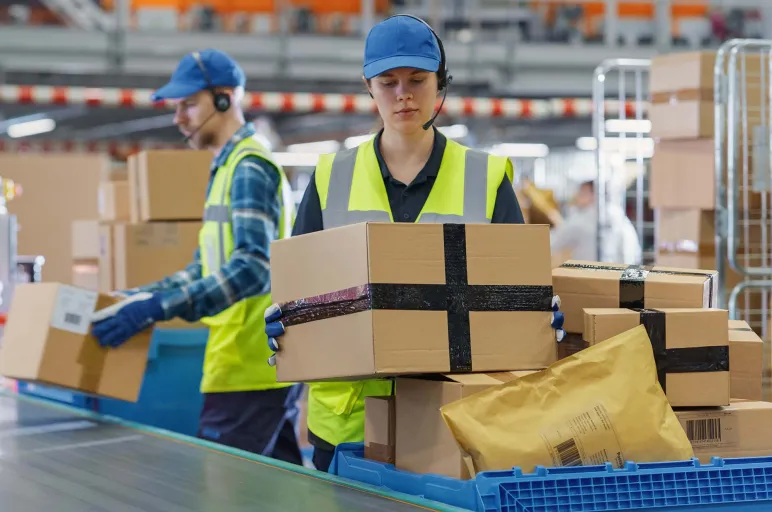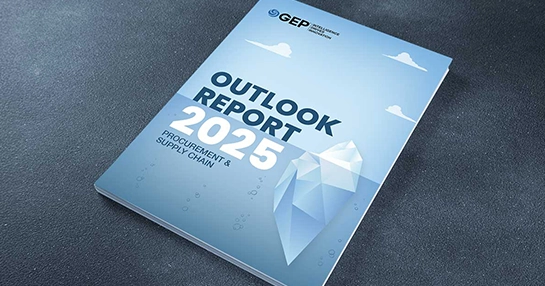
How to Leverage Reverse Auctions in Packaging Procurement
- Procurement teams can use reverse auctions to secure lower prices on packaging materials.
- They are ideal for standardized, high-volume packaging like boxes, film, and tape.
- Success requires clear specs, supplier vetting, strategic lotting, and robust auction execution.
June 20, 2025 | Packaging 4 minutes read
Procurement teams are increasingly turning to reverse auctions to secure better deals on packaging materials. This type of auction lets procurement simplify purchasing and increase transparency through supplier competition. Reverse auctions work well for standardized and high-volume packaging items such as corrugated boxes, stretch films, and tapes.
Procurement can achieve significant cost savings and speed up the buying process through real-time bidding.
However, successful reverse auctions need careful preparation -- through clearly defined specifications, pre-qualified suppliers, and appropriate lotting strategies.
Why Makes Reverse Auctions Different from Other Types of Auctions?
Reverse auctions offer several advantages. Multiple suppliers participate, increasing competition and helping buyers access the best market rates. Real-time visibility into bid rankings enhances transparency and creates a level playing field. Buyers can also tailor auction parameters to suit their needs. This provides flexibility in how sourcing events are managed. Suppliers receive immediate feedback on how they compare them to others, allowing them to adjust bids quickly.
When Should Reverse Auctions Be Used for Packaging Products?
Reverse auctions work best for high-volume and standardized packaging like corrugated boxes or stretch film from multiple suppliers.
You’ll need to ensure that the packaging specifications are clear and consistent for items like 32 ECT boxes or plastic pallets. Use reverse auctions to benchmark pricing on tape, bubble wrap, or labels —keeping supplier costs competitive. Avoid using auctions for custom foam inserts or branded rigid boxes needing innovation or design input.
How to Conduct a Reverse Auction
- Define Requirements: Clearly identify the item/service and confirm suitability for reverse auction.
- Align Internally: Get stakeholder buy-in and finalize specifications and strategy.
- Shortlist Suppliers: Pre-qualify and invite capable, competitive suppliers.
- Select a Platform: Choose and configure a reliable reverse auction tool.
- Conduct Mock Auction: Train suppliers and test the system in a dry run.
- Run Live Auction: Launch, monitor bids, and ensure smooth technical execution.
- Evaluate Bids: Analyze final offers and validate against predefined criteria.
- Award Contract: Confirm winner and proceed with contract finalization.
- Post-Auction Review: Gather feedback and document key takeaways for future events.
Lotting Strategies for Auctions
In an auction, lotting strategies describe how things are divided, sorted, or grouped into lots in order to maximize the auction's result.
Here are common lotting strategies for auctions:
- Single Lot Strategy: Individual products like custom-molded foam inserts or luxury rigid boxes auctioned separately due to distinct demand.
- Bundling (Multiple Lot) Strategy: Combine items like corrugated boxes, stretch film, and tape into a packaging kit offered as one lot.
- Mixed Lot Strategy: Auction printed labels individually while bundling cartons and shrink wrap—mixing high and low-value packaging.
- Sequential Lotting: It is the practice of selling goods in a set order, either by varying in demand or value. To keep bidders interested, start with lower-value goods and save the rarest or most wanted items for the last. Start with basic bubble wrap and corrugated boxes, then auction rare items like custom die-cut boxes last.
- Simultaneous Lotting: Bidders can submit simultaneous bids on numerous products at once because all lots are open for bidding at the same time. Run parallel auctions for mailers, corrugated cartons, pallet wraps, and strapping supplies at the same time.
These are a few of the crucial lotting methods. A few more approaches are also available, including continuous lotting, fragmented lotting, homogeneous lotting, and heterogeneous lotting. Depending on the goals of the auction, the intended audience, and the type of assets being auctioned.
Pitfalls To Avoid While Running an Auction
- Lack of Clear Objectives: Entering an e-auction without well-defined objectives can lead to poor results.
- Poorly Defined Auction Specifications: Incomplete auction criteria might result in miscommunications, misplaced expectations, and less-than-ideal bids.
- Lack of Supplier Vetting: Accepting bids from unqualified suppliers may lead to poor quality.
- Insufficient Training for Participants: Bidders who don’t understand how the platform works may lead to ineffective participation.
- Overemphasis on Price: Evaluation criteria should take into account more than simply the lowest bid; they should also take into account aspects like quality, delivery time, and service.
- Inflexible Auction Formats: Adhering to a single auction structure in all circumstances may reduce its efficacy.
Case in Point: U.S. Supermarket Chain Cuts Packaging Costs
A supermarket chain in the U.S. was looking to reduce procurement costs for packaging products. It partnered with GEP and adopted an e-auction as a negotiation tool.
The approach was to pre-qualify suppliers by running a pre-bid to ensure quality and reliability. A reverse e-auction format was chosen, complemented by training sessions for participating suppliers. Detailed specifications and transparent rules were provided to prevent confusion. The auction lasted 30 hours, enabling real-time bids and fostering competition. Suppliers provided their bids on 50-60 SKUs.
The auction achieved a 25-30% cost reduction, diversifying suppliers and enhancing supply chain flexibility. Participating suppliers praised the transparent process, and the client gained valuable data for future procurement strategies.
Take Control of Your Packaging Spend
Leverage reverse auctions can unlock double-digit cost reductions through supplier competitiveness and bring data-backed transparency to your sourcing strategy. The goal should not be about just buying packaging but to strategically source it.
Author: Divy Porwal



